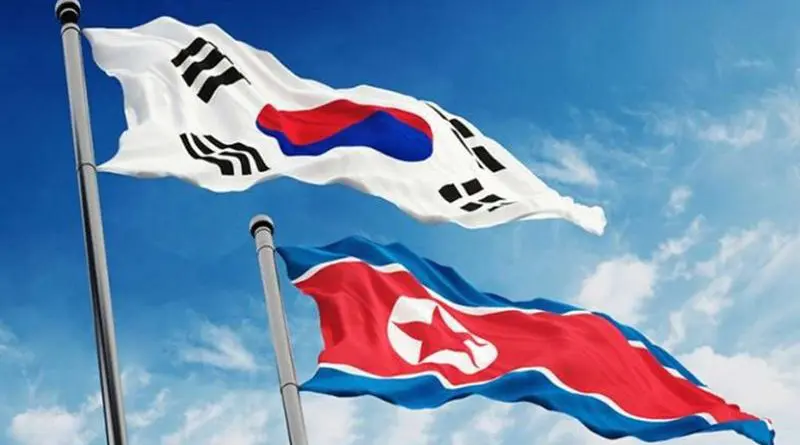Dialogue Between North And South Korea: Dawn Of Peace? – Analysis
After months of bellicose war rhetoric, nuclear and missile tests, there seemed to be a change of heart in Pyongyang, marking a significant thaw of the chill on the peninsula when it proposed to South Korea a date and venue for talks. Officials from both the Koreas headed for their first talks in years on 9 June 2013 in search for some positive end to months of soaring military tensions, thereby thawing decades of mutual distrust. The working-level discussions in the border truce village of Panmunjom are intended to pave the way for ministerial-level talks in Seoul on June 12. What does this mean for the peninsula and the region?
Officials in the South told their counterparts in the North that they would agree to Pyongyang’s offer of working-level talks first and that this should take place at Panmunjom, not north of the border in Kaesong as the North proposed. There have been no working level inter-Korean talks since February 2011 and talks involving ministers have not been held since 2007. Initially, the North termed it premature to hold high-level talks now and said working discussions would be needed initially “in the light of the prevailing situation in which relations have been suspended for many years and mistrust has reached the extreme”. Later, it agreed to Seoul’s conditions.
According to the Committee for the Peaceful Reunification of the Fatherland, a lower-level meeting could be a start to re-open and prevent another closure of the joint factory zone at Kaesong as well as other shuttered inter-Korean business project – the resort complex on Mt. Kumgang. The Kaesong industrial complex ceased operations in April, when North Korea pulled its 53,000 factory workers from the complex. Seoul’s offer of working-level talks include allowing the managers of the more than 120 South Korean factories in the zone to be able to retrieve raw materials and finished goods left behind after they pulled out. The Kumgang mountain tourism resort, another rare inter-Korean cooperative venture, also generated millions of dollars worth of revenue for the communist government. This too remains shut.
Pyongyang’s move to resume dialogue shows that it was under immense pressure to tone down the bellicose rhetoric of the past months. Tension on the Korean peninsula was a key agenda in the talks between Chinese President Xi Jinping and President Obama in California last week. This issue will also figure when President Park Geun-hye travels to Beijing to meet her counterpart on 27 June. Having earned the reputation as Asia’s Iron Lady for her tough stand, Park addressed 140 top military commanders, saying Pyongyang’s offer to hold official talks is a result of Seoul standing firm in the face of threats and provocations from the North.
In a further sign of easing tensions on the Korean peninsula, North Korea reopened a Red Cross hotline with South Korea, which the North suspended in March as military tensions flared. The Red Cross link runs through the border truce village of Panmunjom and has long been a vital source of government-to-government communication in the absence of diplomatic relations. Another hotline, used by military officials to communicate with the UN Command at Panmunjom remains shut.
Is this reversal of Pyongyang’s stand a real change of heart or otherwise? Given the past behaviour, can South Korea and the global community trust the North this time? One possible reason behind Pyongyang’s motivation could be that it came under immense pressure from China, its sole major ally. When North Korea began threatening its neighbour and the US with nuclear attack, it created a pretext for the US to station ships and anti-missile defenses in East Asia. That upsets China’s agenda and this time around may have pressurized Pyongyang to opt for peace. China was also getting worried that its long term strategic agenda of regional domination will be hampered when news reports surfaced that both Japan and South Korea may revisit their nuclear options in response to Pyongyang’s nuclear weapon program. That made the situation uncomfortable for China. China could not have missed that Japan under the nationalist leader, Abe Shinzo, has started strengthening its anti-missile potential.
Under the circumstances, while Seoul should welcome the offer of talks from Pyongyang, it needs to be circumspect and not hurry to accept Pyongyang’s conditions. President Park’s position looks stronger. She needs to take into account that Pyongyang leadership may be under the influence of the nuclear power mirage. The ultimate aim for President Park should be to persuade Pyongyang to return to the six-party talks. Though Park has welcomed the initiative, she remains adamant that any substantive dialogue on wider issues can only take place if the North shows some tangible commitment to abandoning its nuclear weapons program. North Korea has been equally emphatic in declaring its nuclear deterrent is not up for negotiation. At the hindsight, it appears that Pyongyang’s dialogue offer has all the hallmarks of Pyongyang’s diplomacy and it now invites South Korea to pay for the problems of its own creation. President Park needs to be tough in getting Pyongyang’s compliance to her terms if the North wants South’s help and assistance.
Rajaram Panda
Visiting Faculty, SLLCS, JNU
E-mail: [email protected]
This article was published by IPCS and reprinted with permission.

